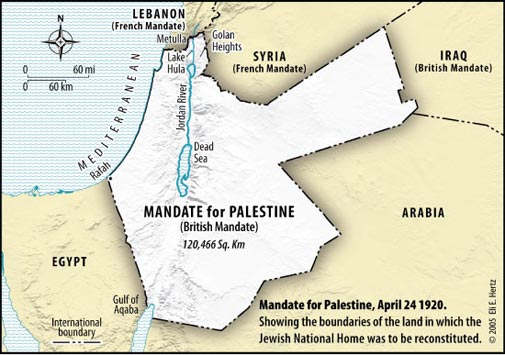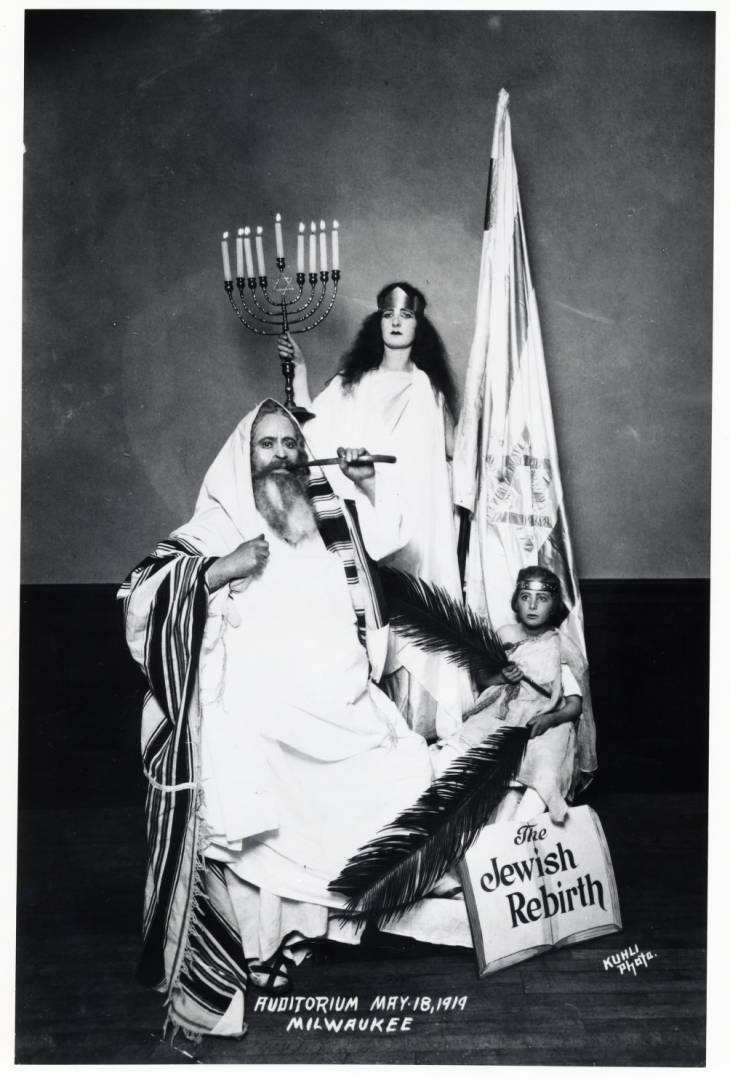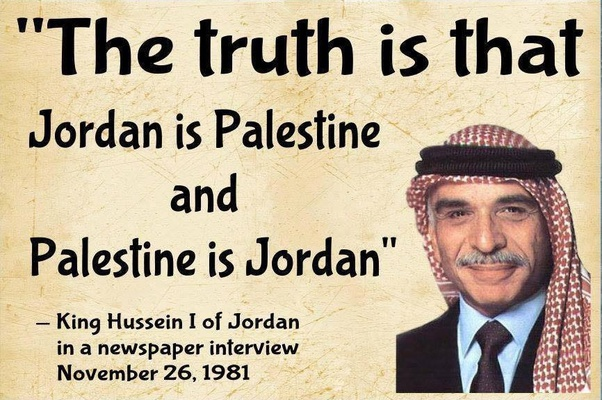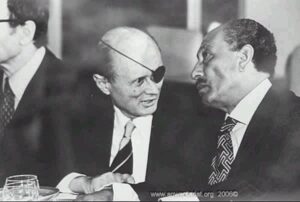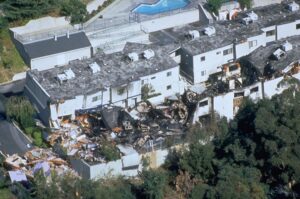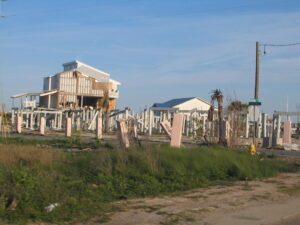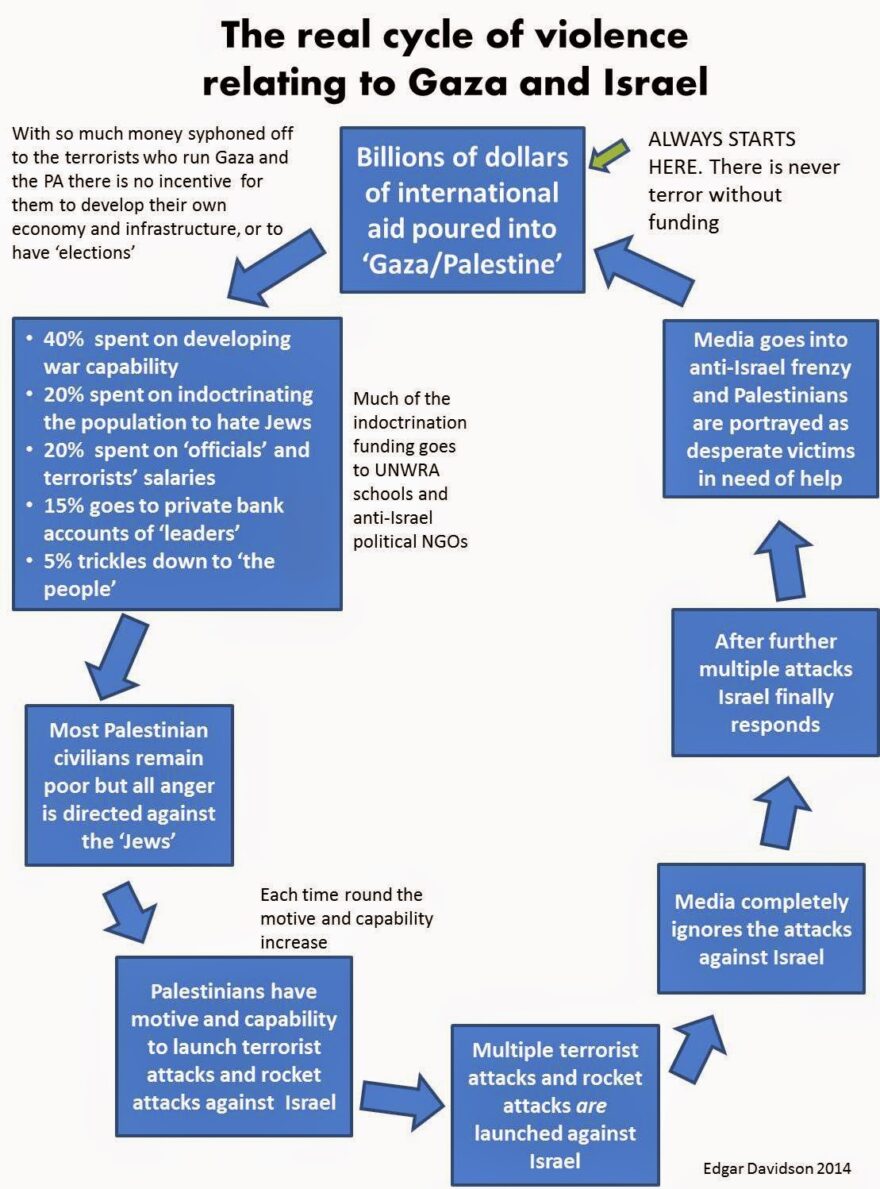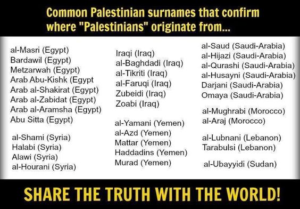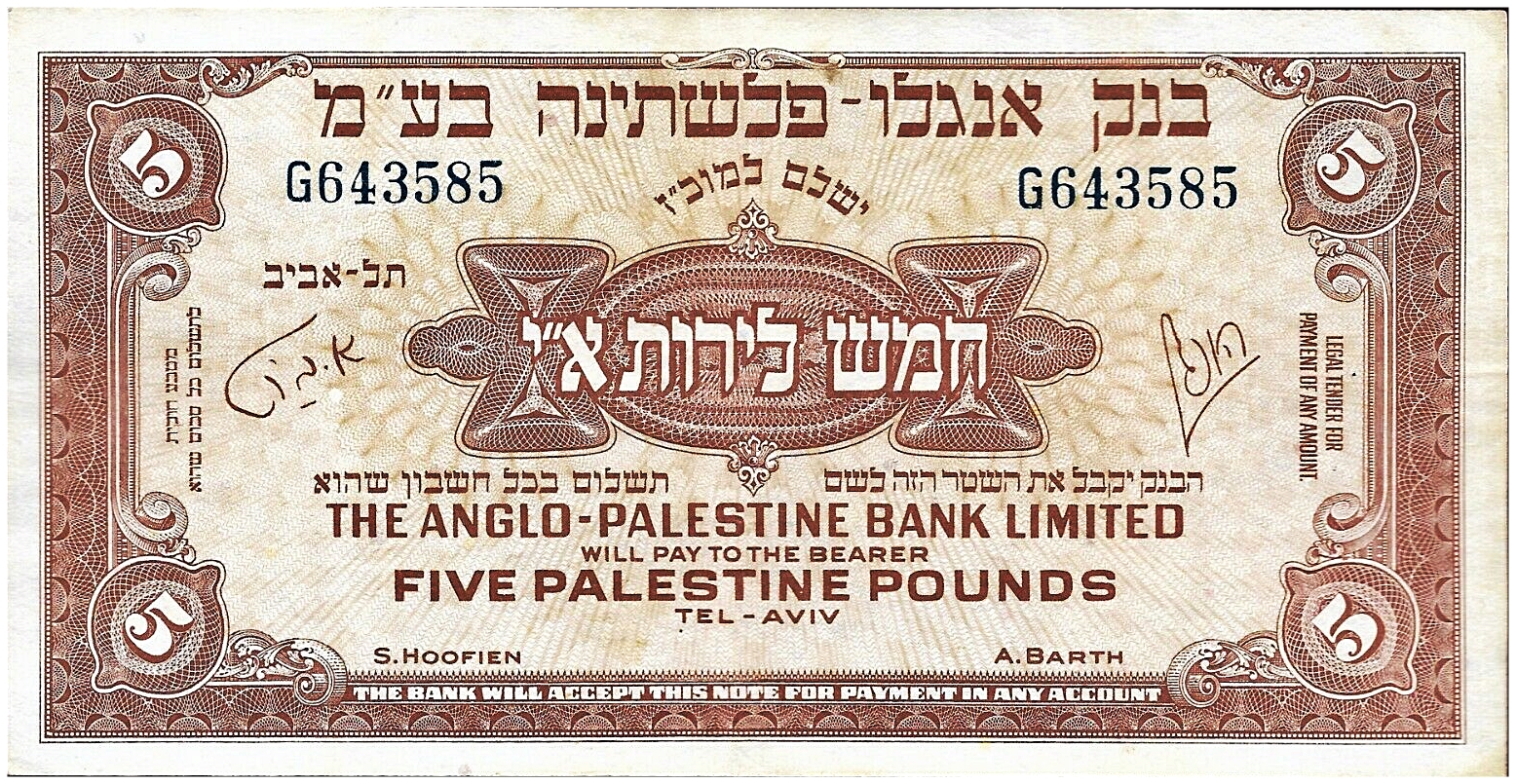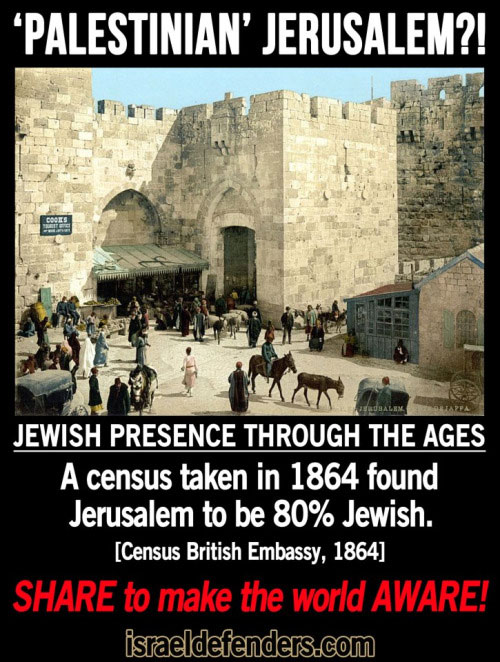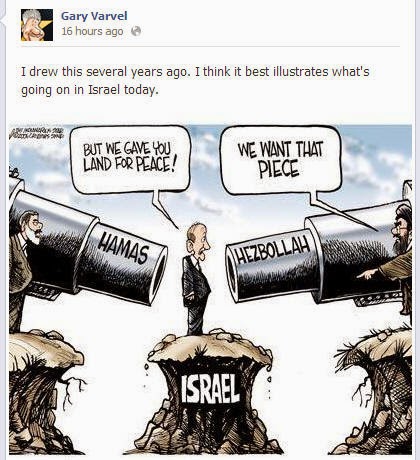|
|||||||||||||||||||||||||||||||||||||||||||||||||||||||||||||||||||||||||||||||||||||||||||||||||||||||||||||||||||
| The U.S. Congress in 1922 March 7, 2008 | Eli E. Hertz http://www.mythsandfacts.org/article_view.asp?articleID=100
On June 30, 1922, a joint resolution of both Houses of Congress of the United States unanimously endorsed the “Mandate for Palestine,” confirming the irrevocable right of Jews to settle in the area of Palestine—anywhere between the Jordan River and the Mediterranean Sea: “Favoring the establishment in Palestine of a national home for the Jewish people. “Resolved by the Senate and House of Representatives of the United States of America in Congress assembled. That the United States of America favors the establishment in Palestine of a national home for the Jewish people, it being clearly understood that nothing shall be done which should prejudice the civil and religious rights of Christian and all other non-Jewish communities in Palestine, and that the holy places and religious buildings and sites in Palestine shall be adequately protected.” [italics in the original] On September 21, 1922, the then President Warren G. Harding signed the joint resolution of approval to establish a Jewish National Home in Palestine. Here is how members of congress expressed their support for the creation of a National Home for the Jewish people in Palestine – Eretz-Israel (Selective text read from the floor of the U.S. Congress by the Congressman from New York on June 30, 1922). All quotes included in this document are taken verbatim from the given source. CONGRESSIONAL RECORD 1922 HOUSE OF REPRESENTATIVES NATIONAL HOME JUNE 30, 1922 HOUSE RESOLUTION 360
Representative Walter M. Chandler from New York – I want to make at this time, Mr. Speaker and gentlemen of the House, my attitude and views upon the Arab question in Palestine very clear and emphatic. I am in favor of carrying out one of the three following policies, to be preferred in the order in which they are named: (1) That the Arabs shall be permitted to remain in Palestine under Jewish government and domination, and with their civil and religious rights guaranteed to them through the British mandate and under terms of the Balfour declaration.
|
|||||||||||||||||||||||||||||||||||||||||||||||||||||||||||||||||||||||||||||||||||||||||||||||||||||||||||||||||||
6 Facts That You Need to Know About Israel’s Legal Rights |
|||||||||||||||||||||||||||||||||||||||||||||||||||||||||||||||||||||||||||||||||||||||||||||||||||||||||||||||||||
So in the last one Hundred years the Arabs have rejected Option one. Israel needs to take Option Two and Three.Failed Two State Solution ‘אולי הסרטון הכי חזק נגד ‘שתי מדינות לשני עמים |
|||||||||||||||||||||||||||||||||||||||||||||||||||||||||||||||||||||||||||||||||||||||||||||||||||||||||||||||||||
|
Deal of the Century vs the Torah11June2020 י”ט סיון תש”פ – https://www.hakolhayehudi.co.il/item/english/deal_of_the_century_vs_the_torah Last week, 400 Rabbis in Israel signed a proclamation rejecting the “Deal of the Century” peace plan. Without calling up every Rabbi in the Promised Land, I tried in vain to find a Torah scholar who would ratify the peace proposal that was set forth in Washington by United States President Donald Trump, indicating that the broad consensus of Israeli Rabbis believes that the deal is a rotten one. We asked a few leading Rabbis of the Religious Zionist community to explain their vehement opposition. HaRav Dov Lior, Former Chief Rabbi of Hevron Before the establishment of the Medinah, in response to the Peel Commission, which sliced up the Land of Israel and drastically restricted Aliyah via the White Paper, HaRav Moshe Harlop declared that it was preferable to have one’s hand chopped off than to sign the treacherous document. Years previously, the Balfour Declaration allotted to the Jews all of the borders of Biblical Israel, on both sides of the Jordan River. Then the British gave Transjordon to the Arabs with a scratch of the pen. HaRav Harlop said it is preferable to have one’s hand chopped off than to sign any document agreeing to give any portion of Ertetz Yisrael to the goyim. At that time, we were physically and economically weak. We needed the goyim to survive. Today isn’t the same. Today we can uphold the Torah obligation to keep the Land of Israel under our control, and from that will come the greatest blessing. You can’t perform a transgression for the promise of a reward. You can’t agree to an agreement that states if you work 2 hours on Shabbat you will receive a ten million dollars bonus. People said to HaRav Harlop – if we don’t agree, we won’t have any State at all. He replied that it was better to remain in exile rather than to transgress the word of Hashem and the Torah commandment to conquer and dwell in the Land of Israel, and to keep it under our control, as delineated by Ramban in his treatise, “Supplement to the Sefer HaMitzvot of the Rambam,” Positive Commandment 4. The same holds true today. It is better to reject the whole plan than to open the door to a foreign terror regime in our midst. Administrations in Washington come and go. Once you sign an international agreement, there’s no backing out. And who knows what a leftist government in Israel will agree to give the Arabs for the illusion of peace? We cannot be an active partner to such an heretical agreement in any shape or form. To do so would be a clear continuation of the Sin of the Spies, as the verse states: “They despised the cherished Land.” |
|||||||||||||||||||||||||||||||||||||||||||||||||||||||||||||||||||||||||||||||||||||||||||||||||||||||||||||||||||

San Remo: The Original ‘Deal of the Century’By Yishai Fleisher One hundred years ago this week, the British Balfour Declaration—which recognized the Jewish rights to the land of Israel—became international law. The Allies, the countries that defeated the Ottoman Empire in World War I, gathered in San Remo, Italy, in late April 1920 to carve up the Middle East. Basing their outlook on Woodrow Wilson’s principle of self-determination, they set out to establish new would-be countries through a mentoring program called “mandates.” The Arabs, now free of the Turks, would get Syria, Lebanon and Mesopotamia (Iraq). The Jews would get “Palestine” (Palestine was a Jewish thing back then). The language of the 1917 Balfour Declaration was put directly into the San Remo accords: “[T]he Mandatory should be responsible for putting into effect the declaration originally made on November 2nd, 1917, by the Government of His Britannic Majesty, and adopted by the said Powers, in favour of the establishment in Palestine of a national home for the Jewish people.” This decision was soon unanimously ratified by 56 member states of the League of Nations, and later became part of the United Nations Charter, thus paving the way for the third Jewish commonwealth, reborn on its ancestral soil after 2000 years. Yet this momentous occasion, on which the international community recognized and then ratified the inalienable right of the Jewish people to the Land of Israel for the first time in modern history, is often forgotten. Instead, attention is diverted to the radio broadcast of the U.N. vote for Partition on Nov. 29, 1947, where the U.N. General Assembly voted in favor of a resolution adopting the U.N. Special Committee on Palestine (UNSCOP) partition plan of Palestine into Jewish and Arab states and for which 33 states voted in favor, 13 against and 10 abstained. Legally speaking, the two events cannot be put on the same scale. The San Remo Accords were binding law, ratified by member states, which took quick effect. Even the United States, which was not a member of the League of Nations, took measures to recognize the accords. Conversely, the UNSCOP Partition Plan was merely a non-binding resolution, voted on in the toothless General Assembly (not the Security Council), and was immediately rejected by the Arabs—in other words, the whole exercise of the partition plan vote was null and void. The U.N. bundle narrativeThe U.N. partition vote does have the distinction of being the immediate precursor to Israel’s declaration of independence. While David Ben-Gurion and the Jewish Agency accepted the partition plan—ready to take what they could get for the Jewish people in the aftermath of the Holocaust—other Zionists rejected the plan outright as an abrogation of previous agreements. At the time, the U.N. resolution was instrumental, but that is a far cry from the portrayal of the U.N. partition vote as the foundational moment of Israel as a sovereign Jewish state. So why does the empty U.N. partition resolution get so much play as compared with the real law of San Remo Accords? The answer lies in who is presenting the history—what they want Israeli policy to look like and what they want to say about Israel’s legitimacy. For those who wish to see a “two-state solution” implemented, the idea that Israel was created through the U.N. partition vote is an indispensable narrative. The logic is clear: If the U.N. gave birth to Israel, and that birth was within the partition framework, then that original vision of two states is the controlling rubric. Any deviation from partition/two-states is an act of imperialism, colonialism and occupation—words which U.N.-narrative folks use against Israel’s presence in Judea and Samaria regularly. Moreover, if the U.N. is the parent of the Jewish State, then under the principle of “Honor thy father and mother,” Israel must kneel to the U.N.’s many anti-Israel resolutions and declarations. The U.N.’s admonitions that Israel is not democratic enough, that it has stolen land, that it abuses the Palestinians and most centrally that it must “give back” land to create yet another Palestinian state, must be heeded. In short, promoters of the U.N. narrative argue that Israel was born in the halls of the General Assembly and that the original vision of partition is its only legitimate path forward. It is not surprising therefore that two-state proponents are invariably U.N.-touters—cut from the same narrative cloth. The liberals of San RemoThe San Remo narrative, however, is very different. For those who argue that San Remo is the international legal basis for the creation of Israel, the agreement stands for an unabashed recognition of historic Jewish rights in the land of Israel and a stated goal of reconstituting a Jewish commonwealth. The text of the Mandate for Palestine (the 1922 document that put the resolutions of San Remo into practice) is straightforward: “Whereas recognition has thereby been given to the historical connection of the Jewish people with Palestine and to the grounds for reconstituting their national home in that country.” At the San Remo conference, delegates never contemplated giving “Palestine” to the Arabs—the absurd idea of taking Judea away from the Jews and creating an Arab state there. For the delegates, giving Syria, Lebanon and Iraq to the Arabs and giving the Jews their historic and biblical land was equitable enough. This was in line with the Wilsonian “self-determination” doctrine—indigenous peoples would gain independence from former empires and govern themselves. Indeed, no one was about to give recognition to the imperialistic Islamic conquests of the 7th century, nor to the 400-year Ottoman domination which the Allies had just terminated. The text of the Mandate is clear on the issue of land division: “The Mandatory shall be responsible for seeing that no Palestine [Jewish] territory shall be ceded or leased to, or in any way placed under the control of, the Government of any foreign Power.” Indeed, original Israel, as recognized by San Remo-crafted international law, was going to be a big Jewish state, surrounded by newly freed and even bigger Arab states. That was the vision. And what about democracy?The issue of democratic voting in the new Mandate states was not clearly defined at San Remo. However, the framers at the conference were well aware of what it would take to balance power in the region: The Jewish state would be Jewish by charter and not by majority rule. The Mandate for Palestine states that “nothing should be done which might prejudice the civil and religious rights of existing non-Jewish communities in Palestine,” but does not mention national rights, which could potentially undo the Jewish character of the country in any given election. There was no intent to back an untenable, all-out participatory democracy. But U.N.-touters cannot stomach the idea that Israel’s core identity is Jewish, without the necessity of a Jewish majority. That is why they are always stressing the contrived “Jewish and Democratic” stipulation—so as to force the two values onto equal footing. In that line of thinking, Israel is not a Jewish state, but rather a democratic state that happens to house a lot of Jews. However, since demography coupled with democracy could spell the end of the Jewish character of the state, their only viable solution is to shrink away from Arab populations and gerrymander the borders smaller and smaller until there are no Arabs left, only a perfect Jewish democracy on a very small parcel of land remains. Indeed, the framers of San Remo foresaw the folly of such an approach. The non-jihad Arab narrativeAnti-Zionist tendencies among Arabs were strong in the 1920s, but were not ubiquitous. At the time, there also existed a line of thinking among some Arab leaders which saw the process of Middle East self-determination as being a boon to all the indigenous people of the region—all the children of Abraham. Two weeks before the Paris Peace Conference of 1919—the prelude to the San Remo Accords—the Zionist leader Chaim Weizmann met with Emir Feisal, son of the Sharif of Mecca, and put an agreement to paper in which the Arabs would accept the tenets of the Balfour Declaration: “His Royal Highness the Emir Feisal, representing and acting on behalf of the Arab Kingdom of Hedjaz, and Dr. Chaim Weizmann, representing and acting on behalf of the Zionist Organization, mindful of the racial kinship and ancient bonds existing between the Arabs and the Jewish people, and realizing that the surest means of working out the consummation of their natural aspirations is through the closest possible collaboration….” A few weeks later Feisal wrote a letter to the future U.S. Supreme Court Justice Felix Frankfurter, a Zionist: “The Arabs, especially the educated among us, look with the deepest sympathy on the Zionist movement. Our deputation here in Paris is fully acquainted with the proposals submitted yesterday by the Zionist Organization to the Peace Conference, and we regard them as moderate and proper.” Since that time, much has been done to undermine the goodwill between Arabs and Jews as expressed by the Feisal-Weitzman dialogue. But hidden in the ashes are a few coals of this thinking among the Arabs of today. These Arab thinkers, who usually live in fear of jihadists, believe that Arabs have their 22 states on their tribal lands, and Jews their one state on their tribal land, and that mutual acceptance of these facts will avert needless war and will bring about regional cooperation and then prosperity. But the U.N.-partition narrative denies that Arabs could possibly accept a sovereign Israel in Judea and Samaria or that regional cooperation could come about without further partition. Instead, the U.N. types promulgate the belief that there is no possibility of peace without partition. Without saying it, they assert the jihadist position that the Arabs could never really accept a Jewish state in their midst and that large areas of the land of Israel must be Judenrein if there is ever to be a chance for peace. Yet, after the 2005 Gaza disengagement, Israelis have seen clearly that surrendering land only leads to more violence and more demands. A smaller Israel is nothing but a weaker target. Arab Palestine 1.0There is yet another fundamental reason why U.N.-narrative folks wish to bury the story of San Remo: They don’t want us to remember that an Arab Palestine was created in the ’20s that should have satisfied Arab demands and made the Israel-Palestine conflict disappear before it began. In the three years between San Remo and the League’s ratification of the accords in 1923, the British utilized a legal loophole to strip away 77 percent of the mandate for a Jewish Palestine and gift it to the leaders of the Hashemite clan. This was the creation of Trans-Jordan, which was later renamed the Kingdom of Jordan. For many years, we have been told by the U.N. proponents that there is no Middle East peace because there is no Arab Palestine. They want us to avert our eyes from the fact that the Kingdom of Jordan, created on the land originally intended for the Jewish state, is actually an Arab Palestine—but one which refuses to absorb the Palestinians. Therefore, for the pro-Palestine camp, history must start in 1947, where a Jewish state was slated for partitioning as the U.N. gave birth to it. No one has to know that an Arab Palestine was created 20 years prior. Deal of the centuryWe are in the era of the Trump administration’s “deal of the century”—with Israeli sovereignty over the Jewish communities of Judea and Samaria slated to become a reality. And yet, for some, the goal of an Arab Palestinian state on Jewish land persists. It would behoove us now to remember the original deal of the century—the San Remo Accords, signed exactly 100 years ago—which recognized and confirmed Jewish historical national rights to the land of Israel, and equitably divided up the Middle East into a strong Jewish state neighbored by strong Arab states. In that deal of the century, Israel was meant to be big, defensible—and Jewish by charter and not by majority—and there were many Arabs ready to accept and respect it. As we celebrate Israeli independence this year, let us cast off the contrived U.N. narrative in which Israel was born into the inevitability of two states. One hundred years ago, the framers of San Remo laid down common-sense principles, that with implementation, can still become the real deal of the century. |
|||||||||||||||||||||||||||||||||||||||||||||||||||||||||||||||||||||||||||||||||||||||||||||||||||||||||||||||||||
US Ambassador to Israel David Friedman delivers remarks at Kohelet Forum, in an event marking US Secretary of State’s statement regarding the legality of Israeli settlements in the West Bank, Jerusalem, January 8, 2020. |
|||||||||||||||||||||||||||||||||||||||||||||||||||||||||||||||||||||||||||||||||||||||||||||||||||||||||||||||||||
Zuheir Mohsen– Palestinian politician
|
|||||||||||||||||||||||||||||||||||||||||||||||||||||||||||||||||||||||||||||||||||||||||||||||||||||||||||||||||||
Guess the Iconic ZionistBasic Middle East factsHow Middle East realities are a reflection of the behavior of the Palestinians.Barry Shaw 04February2020 http://www.israelnationalnews.com/Articles/Article.aspx/25139 The Middle East is characterized by the following 14-century-old intra-Muslim features which can be summed up as: No intra-Muslim peaceful coexistence, but constant unpredictability, instability, religious and ethnic fragmentation, violent intolerance, terrorism, subversion, and a drive to fulfill Islam-driven goals including the unacceptance of an “infidel” entity in the “abode of Islam.” Most of the Middle East is not driven by a desire to improve its standard of living, but by religious/ideological visions. Western imposed concessions, appeasement and gestures actually embolden them to more aggression and terrorism. The assumption that a Palestinian Arab state could be effectively demilitarized and de-terrorized should be assessed against the track record of the Palestinian Arabs themselves. The 1993 Oslo Accord and the 2005 Gaza Disengagement were supposed to demilitarize and de-terrorize the Palestinians in return for dramatically enhanced political and economic benefits. Instead, both events intensified terrorism in a dramatic manner. A direct correlation exists between the degree of Palestinian Arab sovereignty and the level of Palestinian terrorism. For example, in 1968-70, Jordan provided the Palestinian Arabs with an unprecedented platform of operation. Consequently, they triggered a civil war, attempting to topple the pro-US Hashemite regime. During the 1970s, the Palestinians initiated a series of civil wars in Lebanon. In August 1990, the Palestinian Arabs collaborated with Saddam Hussein’s invasion of their host county (Kuwait), which triggered the 1991 and 2003 Gulf Wars. Immediately after Israel’s withdrawal from the Gaza Strip, a Palestinian civil,war erupted and Hamas usurped power, oppressed any opposition, destroyed the agricultural and community projects left by Israel, and turned Gaza into a network of terror bases, indoctrinated the people into violence, and launched thousands of rockets into Israeli civilian centers. The assumption that granting Palestinians territory to develop a peaceful base for statehood and prosperity has become a classic oxymoron and is a terrible diplomatic mistake. The Palestinians are agitated not by the size of the Jewish State but by its very existence. All sides of the Palestinian political divide call for the “liberation” of Palestine “From the River to the Sea,” the annihilation of Israel. It is worth recalling past Arab voices. They are as relevant today as when they were spoken decades ago. In October 1994 Jordan’s military commanders advised their Israeli counterparts: “That which the Palestinians sign in the morning they tend to violate by the evening.” They added that “A Palestinian state west of the Jordan River would doom the Hashemite regime east of the River.” Former Egyptian President, Hosni Mubarak (1981-2011): “Jordan’s King Hussein does not want a Palestinian state; Egypt, Saudi Arabia and the UAE are not concerned about the Palestinians.” Former Egyptian President Anwar Sadat (1970-1981): “Do I want a Palestinian state? Why should I want another Soviet base and another member of the Rejectionist Front?” (“No More War”) Israeli affirmative action and the lack of global counter action. In 1948/49, Israel’s first Prime Minister, David Ben-Gurion, unilaterally applied sovereignty to West Jerusalem and large parts of the Negev and the Galilee, in spite of US and global opposition. In the aftermath of the 1967 Six Day War, Israel’s Prime Minister Eshkol united the city of Jerusalem, notwithstanding US and global opposition. Israel Defense Forces (IDF) destroyed a nuclear reactor built in the northeastern Syrian province of Deir al-Zor in 2007. In December 1981, Israel’s Prime Minister Menachem Begin asserted the Israeli law in the Golan Heights despite brutal pressure by the US, including the suspension of a major strategic pact. In June 1981, Israel destroyed Iraq’s nuclear reactor, notwithstanding White House opposition. Begin’s unilateral action spared the US a nuclear confrontation in January 1991. It is in Israel’s vital interest to annex both the Jordan Valley and the bulk of territory in Judea & Samaria, including all the high ground that dominates central Israel’s narrow, low-lying, coastal strip. These facts are self-evident and essential to maintain the security and safety of Israeli citizens, if not the rest of the Middle East which, as this article proves, will continue to be a maelstrom of ethnic, tribal and religious violence. With acknowledgement to Ambassador Yoram Ettinger for lighting the spark for this article. |
|||||||||||||||||||||||||||||||||||||||||||||||||||||||||||||||||||||||||||||||||||||||||||||||||||||||||||||||||||
Ze’ev Jabotinsky, warned the Jew of Europe in the 1920s and 1930s to leave and in 1933 we get..From Wikipedia, the free encyclopedia As soon as Hitler, y”sh rose to power, any doubts any European Jews still harbored as to his intentions should have been put to rest. But, surely by the time Kristallnacht happened, could anyone have still had any illusions that Jews could continue to live in Europe? New Consider the situation in Eretz Yisrael over the same time period…
Clearly, Hashem provided an escape hatch, but only up until a certain point. And that point seems to have been 1939. Until then, immigration to Eretz Yisrael for Jews was unrestricted.
And the “grace” period for the Jews of Europe was over as they found themselves both locked in and locked out. |
|||||||||||||||||||||||||||||||||||||||||||||||||||||||||||||||||||||||||||||||||||||||||||||||||||||||||||||||||||
Einat Wilf: Why the Israeli left collapsed |
|||||||||||||||||||||||||||||||||||||||||||||||||||||||||||||||||||||||||||||||||||||||||||||||||||||||||||||||||||
Comments on the “Einat Wilf: Why the Israeli left collapsed” video from YouTube: Mark Simons 2 years ago (edited) |
|||||||||||||||||||||||||||||||||||||||||||||||||||||||||||||||||||||||||||||||||||||||||||||||||||||||||||||||||||
What Will Israel Look like in 5 Years with a Palestinian Arab State Alongside It? |
|||||||||||||||||||||||||||||||||||||||||||||||||||||||||||||||||||||||||||||||||||||||||||||||||||||||||||||||||||
Israel gives away land for fake “Peace Plans”, US gets Disasters
|
|||||||||||||||||||||||||||||||||||||||||||||||||||||||||||||||||||||||||||||||||||||||||||||||||||||||||||||||||||
Arabs give Israel WARConflicts considered as wars by the Israeli Ministry of Defense (as they were named by Israel) are marked in bold.[3] |
|||||||||||||||||||||||||||||||||||||||||||||||||||||||||||||||||||||||||||||||||||||||||||||||||||||||||||||||||||
And gave the rest of the World TerrorList of Islamist terrorist attacksFrom Wikipedia, the free encyclopedia
|
|||||||||||||||||||||||||||||||||||||||||||||||||||||||||||||||||||||||||||||||||||||||||||||||||||||||||||||||||||
Dore Gold Cambridge Jerusalem Speech and Q and A |
|||||||||||||||||||||||||||||||||||||||||||||||||||||||||||||||||||||||||||||||||||||||||||||||||||||||||||||||||||
WHAT IS PALESTINE? WHO ARE THE PALESTINIANS? |
|||||||||||||||||||||||||||||||||||||||||||||||||||||||||||||||||||||||||||||||||||||||||||||||||||||||||||||||||||
|
THE NAZIS AND THE PALESTINIAN MOVEMENT from FACESHIRHOME on Vimeo. What’s Holding the Arab World Back? |
|||||||||||||||||||||||||||||||||||||||||||||||||||||||||||||||||||||||||||||||||||||||||||||||||||||||||||||||||||
Einat Wilf – How Israel Can Achieve Victory |
|||||||||||||||||||||||||||||||||||||||||||||||||||||||||||||||||||||||||||||||||||||||||||||||||||||||||||||||||||
The 2 State Solution is DEAD! |
|||||||||||||||||||||||||||||||||||||||||||||||||||||||||||||||||||||||||||||||||||||||||||||||||||||||||||||||||||
Yoram Ettinger: There is no Arab Demographic Time Bomb [Hebrew with English subtitles] |
|||||||||||||||||||||||||||||||||||||||||||||||||||||||||||||||||||||||||||||||||||||||||||||||||||||||||||||||||||



